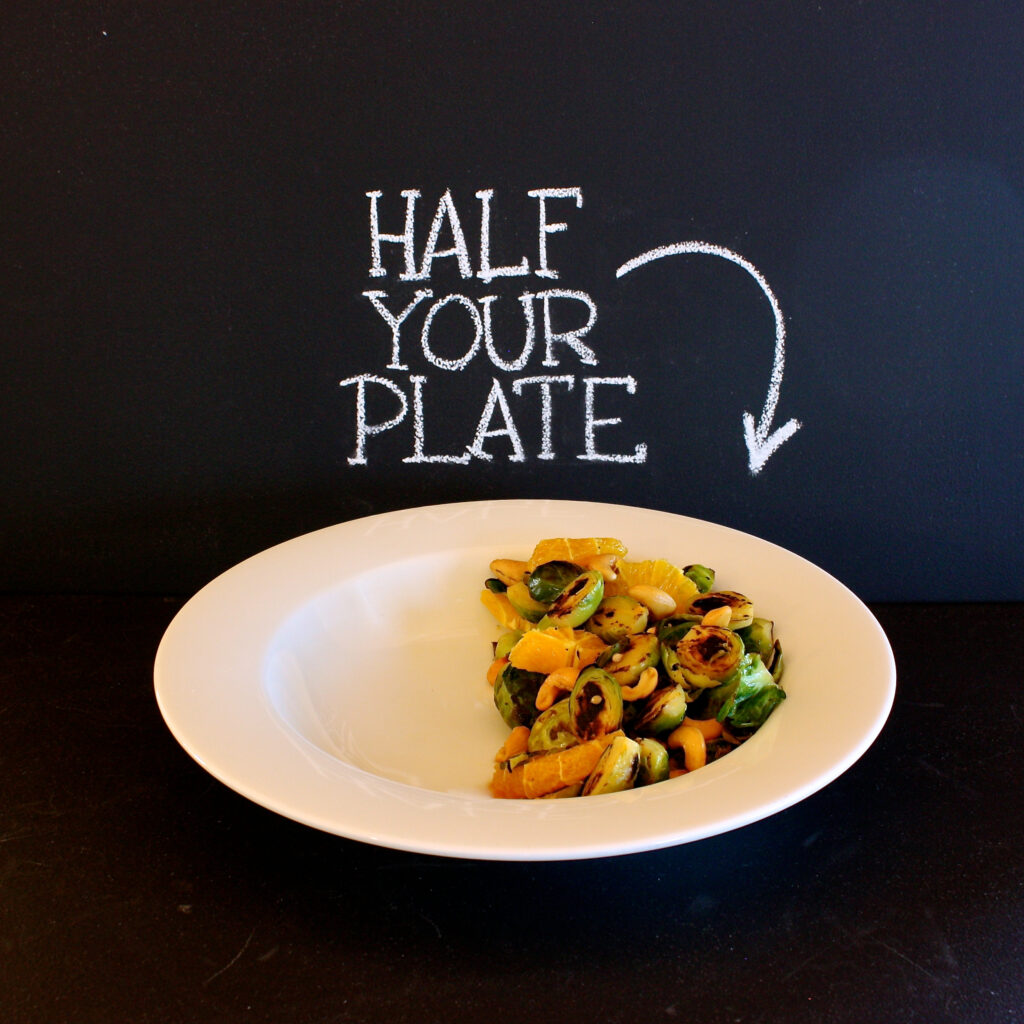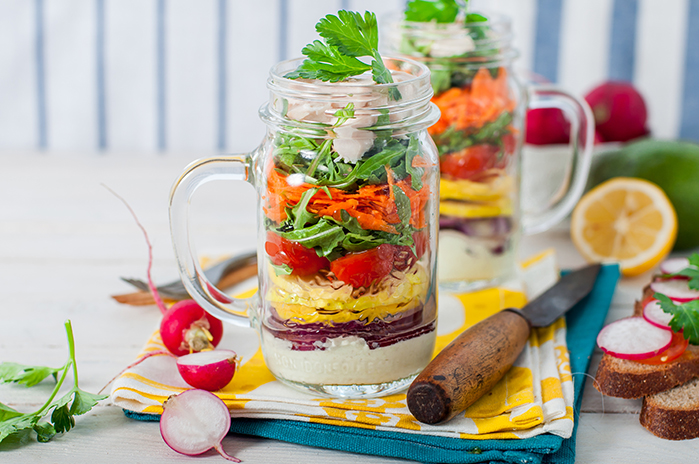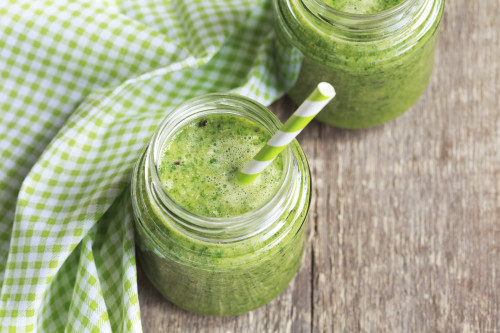By Marianne Lefebvre, R.D., M.Sc., dietitian
No matter where you are in the world, you will experience culinary practices rooted in culture and history, with a rich blend of fruits, vegetables, and traditional dishes. This blog takes you on a culinary journey through the Caribbean, India, Korea, the Middle East, and East Africa, showcasing the regions’ distinctive local ingredients and recipes, and unique fruits and vegetables.
Caribbean Produce: African and Indian Influences

The tropical climate of the Caribbean makes it possible to grow a variety of fruits and vegetables year round, with each season bringing different produce to the table. Fruits and vegetables are key to a healthy diet, and the locals are partial to fresh and local products. Caribbean dietary practices are the byproduct of a blend of African, European, Indigenous, and Asian influences, made evident in how these fruits and vegetables are consumed. The Indian influence in Trinidad brought vegetable-based dishes such as doubles (fried chickpea patties). Meanwhile, the African influence introduced cooking techniques like smothering and the use of tubers.
Street food routinely includes fruits and vegetables. This might include plantain puff puffs (doughnuts), vegetable curries, fruit salads, and fresh juice. Fruit and vegetable salads are common. They consist of tropical products such as mango, papaya, avocado, and cucumber. Oranges and guava add a touch of sweetness to salads. Tropical fruits like guava, granadilla (passion fruit), tamarind, and mango are used to make juices, smoothies, and cocktails. Fresh fruits like papaya, guava, and pineapple are also standard dessert ingredients.
As for starchy vegetables, cassava and taro are dried or ground to make flour, a staple food in the Caribbean. Stews, like the popular Guyanese pepperpot (meat and vegetable stew), are packed with vegetables. The same goes for traditional soups like callaloo, an Antillean soup with a base of taro leaves, okra, coconut milk, and sometimes fish or meat. Vegetables are also used to prepare rich, tomato and spice-based Creole sauces. In islands with a strong Indian influence, such as Trinidad, spicy curries are made with potatoes, chickpeas, and eggplant.
Indian Vegetarian Cuisine: Fruits, Vegetables, and Spices

As we move on to Asia, India in particular, fruits and vegetables are a central feature of everyday meals. Produce varies substantially by region, climate, and culinary tradition. South India is partial to coconut and tamarind. To the North, there is a preference for rich curries based on dairy ingredients like paneer (cheese) and ghee (clarified butter). Due to the prevalence of Hinduism and Jainism, a large part of the population is vegetarian, meaning vegetables play a much greater role in the diet. Popular dishes include sabzi (sauteed vegetables) with rice or bread like chapati or naan.
Potatoes, spinach, eggplant, okra (gombo), and squash, not to mention tomato (a fruit!), are simmered in sauces packed with spices: turmeric, cumin, coriander, and garam masala. Salads also play a key role, made with cucumber, tomato, onion, and carrot, and topped with salt, lemon, and sometimes chili peppers. Fruits like green mango and tomato are also converted into sweet and spicy chutneys to complement main dishes. Mint chutney and coconut chutney are particular favorites.
Mango is extremely popular. Nicknamed the “king of fruit”, it is eaten fresh, used to make chutneys, juices, and lassi (a yogurt-based Indian drink). Banana is omnipresent and eaten raw, in desserts, and sometimes in curries. Coconut meat and milk feature in a wide variety of dishes, from curries to desserts. Meanwhile, coconut water is renowned as a refreshing beverage.
Lastly, the widespread consumption of fruits and vegetables in India is also the result of traditional medicine known as Ayurveda, where produce is selected and consumed according to the specific needs of every individual, taking into account the doshas (vital energies responsible for physiological and psychological processes) and the season.
Fermented Produce in Korea: Kimchi and Much More

Fruits and vegetables play a central role in the Korean diet, supported by culinary practices where the emphasis is on freshness and product transformation. Fruit is commonly eaten for dessert or in between meals. Vegetables are found in nearly every meal, often fermented, marinated, or sauteed. Korean cuisine is known for its flavor balance, with accents of salty, sour, sweet, and spicy.
Koreans mainly eat seasonal produce, believed to be more beneficial for health. Kaki (persimmon) is a fall fruit, while strawberries and watermelon thrive in the summer. Sesame oil and soy sauce are common vegetable seasonings. Some vegetables (spinach, cucumbers, and lotus root) are used to make banchan, a type of side dish served with rice and a main dish. These side dishes include marinated, sauteed, blanched, or fermented vegetables. Cabbage-based kimchi is a staple of Korean cuisine. There are hundreds of varieties, featuring all kinds of vegetables such as napa cabbage, radish, and cucumber. It is made by fermenting vegetables with salt, pepper, garlic, and ginger.
Bibimbap is also a highly popular dish consisting of rice, sauteed or blanched vegetables (carrot, spinach, zucchini, etc.), meat, and an egg. During Korean barbecue, meat is cooked directly at the table and served with mushrooms (shiitake, enoki, and King Oyster), onions, and sweet potato, which are also grilled, together with rice and sauces.
Dessert typically involves fruit in its natural form, with a preference for the freshness of Korean pears, watermelon, and strawberries. Yuzu (Korean lemon) and prunes feature in the preparation of fermented drinks, teas, and syrups. Jujubes (red dates), whether fresh or dried, elevate traditional teas. Some add them to soup, while others prefer them as a dessert food.
Fun fact: In traditional Korean medicine, fruits and vegetables are renowned for their health benefits. Seaweed soup is said to purify the blood after childbirth, and lotus root is recommended to help with digestion.
The Middle East: The Art of Elevating Fruits and Vegetables

Middle Eastern cuisine takes its inspiration in large part from Mediterranean culinary traditions. It focuses on fresh products, herbs, and spices to give flavor to fruits and vegetables, foodstuffs that are deeply engrained in the food culture. While several cuisines are characteristic of this part of Afro-Eurasia, they all center around the famous pita bread, which features in every meal. The hot, dry climate makes it easy to grow fruits such as citrus fruits, pomegranates, figs, kakis, and dates, in addition to heat-resistant vegetables such as cucumbers, zucchini, and eggplant. Not to mention tomatoes, also considered to be vegetables.
Dates, representative of the region, are consumed fresh or dried, often with tea, or as a nutritious snack during Ramadan. Fresh pomegranate is a popular salad topping. It is also used to make juices and syrups, like the unrivaled pomegranate molasses, a widespread condiment to add flavor to meals. Dried fruits such as figs, apricots, and raisins, in addition to nuts like pistachios and almonds, make for key ingredients in pastries such as baklava or an easy snack.
There’s a particular penchant for raw vegetables at breakfast, lunch, and dinner, not to mention for salads dressed with olive oil, lemon, and sumac. Tabbouleh (parsley, tomato, and bulghur) and fattoush are highly popular salads in this part of the world. Eggplant is the star of the show in emblematic dishes such as baba ganoush (grilled eggplant puree), also known as eggplant caviar. Stuffed vegetables such as zucchini feature in the preparation of imam bayildi, a Turkish dish. Legumes such as chickpeas and lentils are also used as a base for hummus (chickpea puree) and falafels (fried chickpea patties).
In short, the consumption of fruits and vegetables in the Middle East is rich and varied. Fresh and dried products feature in sweet and salty dishes deeply rooted in the region’s culinary and religious traditions.
East African Cuisine: Starchy Vegetables and Tropical Fruits

The East African diet mainly consists of locally grown foodstuffs: maize, barley, several legumes, vegetables (amaranth and cassava leaves, spinach, eggplant, cabbage, carrot, etc.) and starchy vegetables (cassava, sweet potato, taro, etc.).
Despite the many differences throughout East Africa, countries such as Rwanda, Burundi, and Ethiopia, and islands such as Réunion, Mauritius, and Madagascar are similar in several ways. Meals are primarily composed of rice and starches, some vegetables, and meat or legumes (peanuts, beans, lentils, peas) in sauce. In Ethiopia, for most meals, utensils are replaced with a porous, pancake-like bread called injera, made with teff flour, the smallest grain in the world.
The consumption of fruit varies considerably according to local resources, cultural traditions, and the seasons. Pineapple, banana, mango, citrus fruit, and coconut play an important role in the populations’ daily diets, but are inconsistent in their availability. Some communities eat fruit as a snack or dessert, while others include it in savory dishes. For example, avocado and plantain are used in main dishes.
In short, fruit consumption in the Middle East is rich, varied, and influenced by seasonal availability, local crops, and farming practices.
Explore the world through your dinner plate!
From the Caribbean to East Africa, passing through India, Korea, and the Middle East, fruits and vegetables are at the heart of culinary traditions across the globe. Each of these regions celebrates its local ingredients by creating unique dishes that blend freshness, spices, and cultural traditions.
About the Author

Marianne Lefebvre R.D., M.Sc., is a nutritionist, speaker, and international nutrition expert. She has a fervent passion for multicultural cuisine, in terms of both its contributions to the dinner plate and its role as a vehicle for unity and discovery. She firmly believes that food is an excellent way to promote not only cultural exchange and sharing, but also integration, particularly for newcomers to Canada.



